People
There were literally hundreds of Australians - black and white - working to create a more just society for Indigenous Australians in the post-World War II period. This section of the site also includes people from the 1930s to show that activity for Aboriginal rights predated the mass movements of the 1950s and 1960s.
People introduces almost one hundred of these dedicated activists. It includes Aboriginal and Torres Strait Islander people who were spokespeople for their own group and in some cases came to speak for all Indigenous Australians. It includes politicians and public servants, church people and unionists, feminists and members of women's organisations, scientists and doctors.
It's a beginning. These biographical sketches do not cover the whole of a person's life. Rather they focus on each person's contributions to the struggle for Aboriginal rights in the period covered by this site, 1957-1973. Some of these entries are significantly longer than most as they draw on interviews that were conducted as part of a FCAATSI oral history project in 1996. This project was a partnership undertaken by Sue Taffe who was supported by the School of Historical Studies at Monash University and Koorie Arts Collective Incorporated. The project was to interview people who had been members of the executive of FCAATSI in the period 1958 to 1973. Sue Taffe and Leanne Miller, representing Koori Arts Collective Ltd, were the interviewers. This oral history collection of 29 interviews (audio tapes and transcripts) is held in the library of the Australian Institute of Aboriginal and Torres Strait Islander Studies in Canberra.
You may know of others who are not listed here. Please let us know of the contributions of other activists so we can recognise them. Email us: indigenousrights@nma.gov.au.
 George Abdullah
George Abdullah Robert Anderson
Robert Anderson Shirley Andrews
Shirley Andrews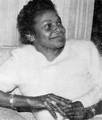 Faith Bandler
Faith Bandler Mary Bennett
Mary Bennett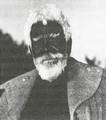 Dooley Bin Bin
Dooley Bin Bin Doris Blackburn
Doris Blackburn Harold Blair
Harold Blair Neville Bonner
Neville Bonner Don Brady
Don Brady Winnie Branson
Winnie Branson Josie Briggs
Josie Briggs Geraldine Briggs
Geraldine Briggs Ken Brindle
Ken Brindle Gordon Briscoe
Gordon Briscoe Marjorie Broadbent
Marjorie Broadbent Ada Bromham
Ada Bromham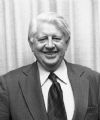 Gordon Bryant
Gordon Bryant Burnum Burnum
Burnum Burnum Charlie Carter
Charlie Carter Barry Christophers
Barry Christophers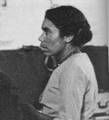 Joyce Clague
Joyce Clague Alf Clint
Alf Clint Paul Coe
Paul Coe HC 'Nugget' Coombs
HC 'Nugget' Coombs Malcolm Cooper
Malcolm Cooper William Cooper
William Cooper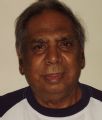 Vince Copley
Vince Copley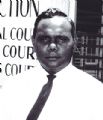 Davis Daniels
Davis Daniels Dexter Daniels
Dexter Daniels Stan Davey
Stan Davey Jack Davis
Jack Davis Charles 'Chicka' Dixon
Charles 'Chicka' Dixon Charles Duguid
Charles Duguid Alan Duncan
Alan Duncan Don Dunstan
Don Dunstan Arthur Ellemor
Arthur Ellemor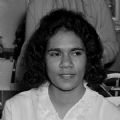 Harriet Ellis
Harriet Ellis Gladys Elphick
Gladys Elphick Frank Engel
Frank Engel William Ferguson
William Ferguson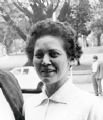 Dulcie Flower
Dulcie Flower Gary Foley
Gary Foley Pearl Gibbs
Pearl Gibbs William Grayden
William Grayden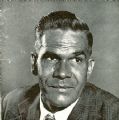 Bert Groves
Bert Groves Rodney Hall
Rodney Hall Paul Hasluck
Paul Hasluck Jack and Jean Horner
Jack and Jean Horner Alick Jackomos
Alick Jackomos Jean Jimmy
Jean Jimmy Vincent Lingiari
Vincent Lingiari Lorna Lippmann
Lorna Lippmann Ted Loban
Ted Loban Lupngiari
Lupngiari Pincher Manguari
Pincher Manguari Brian Manning
Brian Manning Dadaynga 'Roy' Marika
Dadaynga 'Roy' Marika Bob Maza
Bob Maza Lambert and May McBride
Lambert and May McBride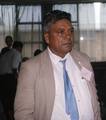 Joe McGinness
Joe McGinness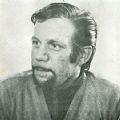 Bruce McGuinness
Bruce McGuinness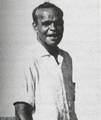 Clancy McKenna
Clancy McKenna Don McLeod
Don McLeod John Moriarty
John Moriarty Albert Namatjira
Albert Namatjira John Newfong
John Newfong Doug Nicholls
Doug Nicholls Oodgeroo Noonuccal
Oodgeroo Noonuccal Jacob Oberdoo
Jacob Oberdoo Eric Onus
Eric Onus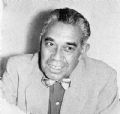 Bill Onus
Bill Onus Gladys O'Shane
Gladys O'Shane Jack Patten
Jack Patten Ted Penny
Ted Penny Charles Perkins
Charles Perkins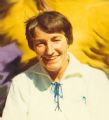 Pauline Pickford
Pauline Pickford Barrie Pittock
Barrie Pittock Mick Rangiari
Mick Rangiari Phillip Roberts
Phillip Roberts Tom Roper
Tom Roper Evelyn Scott
Evelyn Scott Shirley Smith
Shirley Smith Jessie Street
Jessie Street Roberta Sykes
Roberta Sykes Donald Thomson
Donald Thomson Margaret Tucker
Margaret Tucker Alex Vesper
Alex Vesper Anna Vroland
Anna Vroland Denis Walker
Denis Walker Elia Ware
Elia Ware William C Wentworth
William C Wentworth Emil and Hannah Witton
Emil and Hannah Witton